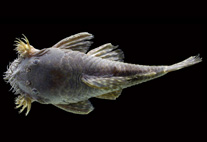Abstract
Subfossil head capsules of Simuliidae larvae have been recovered from swamps on Tubuai and Raivavae of the Austral Islands, and Atiu and Mangaia of the southern Cook Islands. For Tubuai and Raivavae it is likely that the simuliids are extinct, but a single simuliid species is extant on nearby Rurutu. For Atiu and Mangaia, extant simuliids have not been reported, but are known on Rarotonga. Well-preserved head capsules indicate that the Cook Islands subfossils are those of Simulium (Inseliellum) teruamanga Craig and Craig, 1986. For the Austral Islands, the simuliid from Tubuai is consid-ered a variant of Simulium (Inseliellum) rurutuense Craig and Joy, 2000. That from Raivavae is morphologically distinct and is described here as a new species, Simulium (Inseliellum) raivavaense Craig and Porch. Humans arrived in Eastern Polynesia ca. 1,000 years ago resulting in the widespread destruction of lowland forest and conversion of wetlands to ag-riculture with implied consequences for the indigenous biota of these habitats. Here we consider that one such result was loss of freshwater aquatic biodiversity.

